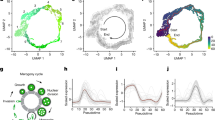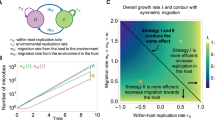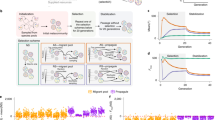Abstract
Maternally-inherited male killing microorganisms are known in a number of insect species. We here discuss the evolutionary reasons for such behaviour through examining the ongoing dynamics of these elements. In cases where death occurs late in the life cycle, horizontal transmission associated with male death occurs but in others no such direct advantage to killing the individual appears to exist. The evidence that early male killing is analogous to primary sex ratio distortion through increasing the fitness with respect to producing females from increases in resources to surviving (female) offspring and through the prevention of inbreeding is discussed. The early life history of many of these species suggests an early resource advantage may accrue from male killing. Inbreeding avoidance appears to be an important factor in at least two cases. The potential for horizontal transmission to maintain these elements is also discussed. It is concluded that male killing appears to be an adaptive strategy for the microorganism in most cases.
Similar content being viewed by others
Article PDF
References
Agarwala, B K. 1991. Why do ladybirds (Coleoptera: Coccinellidae) cannibalize? J Biosci, 16, 103–109.
Andre, F. 1934. Notes on the biology of Oncopeltus fasciatus (Dallas). Iowa State Coll J Sci, 9, 73–87.
Ayala, F J, Powell, J R, Tracey, M L, Mourao, C A, and Perez-Salas, S. 1972a. Enzyme variability in the Drosophila willistoni group. III. Genie variation in natural populations of Drosophila willistoni. Genetics, 70, 113–139.
Ayala, F J, Powell, J R, and Tracey, M L. 1972b. Enzyme variability in the Drosophila willistoni group. V. Genie variations in natural population of Drosophila equinoxalis. Genet Res, Camb, 20, 19–42.
Ayala, F J, Tracey, M L, Barr, L G, and Ehrenfeld, J G. 1974. Genetic and reproductive differentiation of the sub-species, Drosophila equinoxalis carribiensis. Evolution, 28, 24–41.
Banks, C J. 1955. An ecological study of Coccinellidae (Col.) associated with Aphis fabae Scop, on Vicia fabia. Bull Ent Res, 46, 561–587.
Banks, C J. 1956. Observations on the behaviour and mortality in Coccinellidae before dispersal from the egg shells. Proc R Ent Soc Lond (A), 31, 56–60.
Birch, L C, and Battaglia, B. 1957. The abundance of Drosophila willistoni in relation to food in natural populations. Ecology, 38, 165–166.
Bishara, I. 1934. The cotton worm, Prodenia litura F., in Egypt. Bull Soc R Ent d'Egypte, 18, 288–416.
Bongers, J, and Eggermann, W. 1971. Der Einfluß des Subsozialverhaltens der spezialisierten Samensauger Oncopeltus fasciatus Dall. und Dysdercus fasciatus Sign, auf ihre Ernahrung. Oecologia, 6, 293–302.
Brimacombe, L C. 1980. All-female broods in field and laboratory populations of the Egyptian cotton leafworm, Spodoptera littoralis (Boisduval) (Lepidoptera: Noctuidae). Bull Ent Res, 70, 475–481.
Burla, H, Da Cunha, A B, Calcavanti, A G L, Dobzhansky, T H, and Pavan, C. 1950. Population density and dispersal rates in Brazilian Drosophila willistoni. Ecology, 31, 393–404.
Chang, K S, and Morimoto, N. 1988. Life table studies of the walnut leaf beetle, Gastrolina depressa (Coleoptera: Chrysomelidae), with special attention to aggregation. Res Popul Ecol, 30, 297–313.
Chang, K S, Shiraishi, T, Nakasuji, F, and Morimoto, N. 1991. Abnormal sex ratio condition in the Walnut leaf beetle, Gastrolina depressa (Coleoptera: Chrysomelidae). Appl Ent Zooi, 26, 299–306.
Clarke, C, Johnston, G, and Johnston, B. 1983. All female broods in Hypolimnas bolina (L.). A resurvey of West Fiji after 60 years. Biol J Linn Soc, 19, 221–235.
Clarke, C, Sheppard, P M, and Scali, V. 1975. All female broods in the butterfly Hypolimnas bolina (L.) Proc R Soc Lond B, 189, 29–37.
Crozier, R H. 1970. On the potential for genetic variability in haplodiploidy. Genetica, 41, 551–556.
Danthanarayana, W. 1975. The bionomics, distribution and host range of the light brown apple moth, Epiphyas postvittana (Walk.) (Tortricidae). Aust J Zooi, 23, 419–437.
Danthanarayana, W. 1983. Population ecology of the light brown apple moth, Epiphyas postvittana (Lepidoptera: Tortricidae). J Anim Ecol, 52, 1–33.
De Borba, C M B, and Napp, M. 1986. Genetic-ecologic correlations in the enzyme variability of Drosophila willistoni. Rev Bras, de Gen, 9, 593–614.
Dingle, H. 1968. Life history and population consequences of density, photo-period, and temperature in a migrant insect, the milkweed bug, Oncopeltus. Am Nat, 102, 149–163.
Dixon, A F G. 1970. Factors limiting the effectiveness of the coccinellid beetle, Adalia bipunctata (L.), as a predator of the sycamore aphid Drepanosiphum platanoides (Schr.) J Anim Ecol, 39, 739–751.
Earle, N W, and Macfarlane, J. 1968. A unisexual strain of the salt marsh caterpillar, Estigmene acrea. Ann Ent Soc Am, 61, 949–953.
Ebbert, M. 1991. The interaction phenotype in the Drosophila wiisiow-spiroplasma symbiosis. Evolution, 45, 971–988.
Geier, P W, and Briese, D T. 1980. The light brown apple moth, Epiphyas postvittana (Walker). 4. Studies on population dynamics and injuriousness to apples in Australian Capital Territory. Austr J Ecol, 5, 63–93.
Geier, P W, Briese, D T, and Lewis, T. 1978. The light brown apple moth Epiphyas postvittana (Walker). 2. Uneven sex ratios and a condition contributing to them in the field. Austr J Ecol, 3, 467–488.
Gherna, R L, Werren, J H, Weisburg, W, Cote, R, Woese, C R, Mandelco, L, and Brenner, D J. 1991. Arsenophus nasoniae gen.-nov., sp.-nov., the causative agent of the son killer trait in the parasitic wasp Nasonia vitripennis. Int J Syst Bact, 41, 563–565.
Gordon, D M, and Stewart, R K. 1988. Demographic characteristics of the stored products moth Cadra cautella. J Anim Ecol, 57, 627–644.
Gotoh, T, and Niuima, K. 1986. Characteristics and agents of abnormal sex ratios (SR) in two aphidophagous coccinellid species. In: Hodek, I. (ed.), Ecology of the Aphidophaga, Academia, Prague, pp. 545–550.
Grant, B, Burton, S, Contoreggi, C, and Rothstein, M. 1980. Outbreeding via frequency-dependent mate selection in the parasitoid wasp, Nasonia (=Mormoniella) vitripennis Walker. Evolution, 34, 983–992.
Gu, H, and Danthanarayana, W. 1990. Age related flight and reproductive performance of the light brown apple moth, Epiphyas postvittana. Entomol Exp Appl, 54, 109–115.
Hackett, K J, Lynn, D E, Williamson, D L, Ginsberg, A S, and Whitcomb, R F. 1985. Cultivation of the Drosophila spiroplasma. Science, 232, 1253–1255.
Helle, W. 1965. Inbreeding depression in an arrhenokotous mite, Tetranychus urticae. Ent Exp Appl, 8, 299–304.
Hemptine, J-L, Dixon, A F G, and Coffin, J. 1992. Attack strategies of ladybird beetles (Coccinellidae): factors shaping their numerical response. Oecologia, 90, 238–245.
Hill, D S. 1987. Agricultural Insect Pests of Temperate Regions and Their Control. Cambridge University Press, Cambridge.
Hinds, W E. 1904. Life history of the salt marsh caterpillar (Estigmene acrea Dru.) at Victoria, Tex. US Dept Agric Div Entomol Bull, 44, 80–84.
Hu, K. 1979. Maternally inherited ‘sonless’ abnormal sex ratio condition in the ladybeetle Harmonia axyridis. Acta Genet Sin, 6, 296–304.
Hurst, G D D, Majerus, M E N, and Walker, L E. 1992. Cytoplasmic male killing elements in Adalia bipunctata (Linnaeus) (Coleoptera: Coccinellidae). Heredity, 69, 84–91.
Hurst, G D D, Majerus, M E N, and Walker, L E. 1993. The importance of cytoplasmic male killing elements in natural populations of the two spot ladybird, Adalia bipunctata (Linnaeus) (Coleoptera: Coccinellidae). Biol J Linn Soc (in press).
Hurst, G D D, Bourke, D, Elliott, R, Hudson, E, Irving, W, Nicholson, J, Pearson, M, Ransford, M, Sands, Z, Sloggett, J, Walker, L E, and Majerus, M E N. (in prep). Evidence for a resource advantage to male killing behaviour of bacteria in Adalia bipunctata.
Hurst, L D. 1991. The incidences and evolution of cytoplasmic male killers. Proc R Soc Lond B, 244, 91–99.
Hurst, L D. 1993. The incidences, mechanisms and evolution of cytoplasmic sex ratio distorters in animals. Biol Reviews, 68, 121–193.
Ikeda, H. 1970. The cytoplasmically-inherited ‘sex-ratio’ condition in natural and experimental populations of Drosophila bifasciata. Genetics, 65, 311–333.
Jackson, D J. 1956. Notes on Hymenopterous parasites bred from eggs of Dytiscidae in Fife. J Soc Br Ent, 5, 144–149.
Jackson, D J. 1958. Observations on the biology of Carnaphractus cinctus Walker (Hymenoptera: Mymaridae), a parasitoid of the eggs of Dytiscidae. I. Methods of rearing and numbers bred on different host eggs. Trans R Ent Soc Lond, 110, 533–554.
Jackson, D J. 1961. Observations on the biology of Carnaphractus cinctus Walker (Hymenoptera: Mymaridae), a parasitoid of the eggs of Dytiscidae. II. Immature stages and seasonal history with a review of Mymarid larvae. Parasitology, 51, 269–294.
Jackson, D J. 1966. Observations on the biology of Carnaphractus cinctus Walker (Hymenoptera: Mymaridae), a parasitoid of the eggs of Dytiscidae. III. The adult life and sex ratio. Trans R Ent Soc Lond, 118, 23–49.
Kawai, A. 1978. Sibling cannibalism in the first instar larvae of Harmonia axyridis Pallas (Coleoptera, Coccinellidae). KontyÛ, 46, 14–19.
Kimura, M T, Toda, M J, Beppu, H, and Watabe, H. 1977. Breeding sites of Drosophilid flies in and near Sapporo, Northern Japan, with supplementary notes on the adult feeding habits. Kontyû, 45, 571–582.
King, P E, Askew, R R, and Sanger, C. 1969. The detection of parasitised hosts by males of Nasonia vitripennis (Walker) (Hymenoptera: Pteromalidae) and some possible implications. Proc R Ent Soc Lond A, 44, 85–90.
Kirkendall, L R. 1989. Within-harem competition between Ips females, an overlooked component of density-dependent larval mortality. Holarct Ecol, 12, 477–487.
Lanier, G N, and Oliver, J H. 1966. Sex ratio condition: unusual mechanism in bark beetles. Science, 153, 208–209.
Lanier, G N. 1966. Interspecific mating and cytological studies of closely related species of Ips DeGeer and Orthotomictus Ferrari (Coleoptera: Scolytidae). Can Ent, 98, 175–188.
Legrand, J J, Legrand-Hamelin, E, and Juchault, P. 1987. Sex determination in Crustacea. Biol Rev, 62, 439–470.
Leslie, T F. 1984. A sex ratio condition in Oncopeltus fasciatus. J Hered, 75, 260–264.
Leventhal, E A. 1965. A study of the ‘sex-ratio’ condition in Drosophila bifasciata. Am Zool, 5, 649.
Lewis, D. 1941. Male sterility in natural populations of hermaphroditic plants: the equilibrium between females and hermaphrodites to be expected with different types of inheritance. New Phytol, 40, 56–63.
Lus, Y Y. 1947a. Some aspects of the population increase in Adalia bipunctata 2. The strains without males. Dokl Akad Nauk SSSR, 57, 951–954.
Lus, Y Y. 1947b. Some rules of reproduction in populations of Adalia bipunctata: heterozygosity of lethal alleles in populations. Dokl Akad Nauk SSSR, 57, 825–828.
Maclellan, C R. 1973. Natural enemies of the light brown apple moth, Epiphyas postvittana, in the Australian capital territory. Can Ent, 105, 681–700.
Magni, G E. 1953. 'Sex-ratio': a non-Mendelian character in Drosophila bifasciata. Nature, 172, 81.
Magni, G E. 1954. Thermic cure of cytoplasmic ‘sex-ratio’ in Drosophila bifasciata. Caryologia (Suppl.), 6, 1213–1216.
Magni, G E. 1959. II carattere sex ratio in popolazioni naturali ed artificiali di Drosophila bifasciata. 1st Lombardo (Rend Sci), 93, 103–116.
Malogolowkin-Cohen, C H, Levene, H, Dobzhansky, N P, and Simmons, A S. 1964. Inbreeding and mutational load in natural populations of Drosophila willistoni. Genetics, 50, 1299–1311.
Mathew, G F. 1888. Life histories of Rhopalocera from the Australian region. Trans Ent Soc Lond, 1888, 137–138.
Matsuka, M, Hashi, H, and Okada, I. 1975. Abnormal sex ratio found in the lady beetle Harmonia axyridis Pallas (Coleoptera: Coccinellidae). Appl Entomol Zool, 10, 84–89.
Miller, D R, and Borden, J H. 1985. Life history and biology of Ips latidens (Leconte) (Coleoptera: Scolytidae). Can Ent, 117, 859–871.
Miller, D R, Borden, J H, King, G G S, and Slessor, K N. 1991. Ipsenol: an aggregation pheromone for Ips latidens (Leconte) (Coleoptera: Scolytidae). J Chem Ecol, 17, 1517–1527.
Ng, S M. 1986. Effects of first instar cannibalism on the first instar larvae of four species of aphidophagous Coccinellidae. In: Hodek, 1. (ed.), Ecology of the Aphidophaga, Academia, Prague, pp. 69–75.
Niuima, K, and Nakajima, K. 1981. Abnormal sex ratio in Menochilius sexmaculatus (Fabricius). Bull Fac Agric Tamagawa Univ, 21, 59–67.
Niuima, K. 1983. Experimental transfer of abnormal sex ratio in two ladybird species. Bull Fac Agric Tamagawa Univ, 23, 11–17.
Osawa, N. 1989. Sibling and non-sibling cannibalism by larvae of a lady beetle Harmonia axyridis Pallas (Coleoptera: Coccinellidae) in the field. Res Popul Ecol, 31, 153–160.
Osawa, N. 1992. Sibling cannibalism in the ladybird beetle Harmonia axyridis: fitness consequences for mother and offspring. Res Popul Ecol, 34, 45–55.
Pavan, C, Cordeiro, A R, Dobzhansky, N, Dobzhansky, T H, Malogolowkin, C, Spassky, B, and Wedel, M. 1950. Concealed genie variability in Brazilian populations of Drosophila willistoni. Genetics, 36, 13–30.
Poulton, E B. 1928. Adaptations which discourage inbreeding in Lepidoptera and other insects. Proc R Ent Soc Lond, 3, 18–20.
Ralph, C P. 1976. Natural food requirements of the large milkweed bug, Oncopeltus fasciatus (Hemiptera: Lygaediae), and their relation to gregariousness and host plant morphology. Oecologia, 26, 157–173.
Ralph, C P. 1977. Effect of host plant density on populations of a specialized, seed sucking bug, Oncopeltus fasciatus. Ecology, 58, 799–809.
Sauer, D, and Feir, D. 1973. Studies on natural populations of Oncopeltus fasciatus (Dallas), the large milkweed bug. Am Midi Nat, 90, 13–37.
Saul, G, Whiting, P W, Saul, S W, and Heidner, C A. 1965. Wildtype and mutant stocks of Mormoniella. Genetics, 52, 1317–1327.
Simmonds, H W. 1923a. Families of Hypolimnas bolina L. bred from known female parents from different Fijian islands. Trans R Ent Soc Lond, 1923, 651–662.
Simmonds, H W. 1923b. All female families of Hypolimnas bolina L., bred in Fiji by H. W. Simmonds. Proc R Ent Soc Lond, 1923, ix–xii.
Simmonds, H W. 1926. Sex ratio of Hypolimnas bolina L., in Viti Levu, Fiji. Proc R Ent Soc Lond, 1, 29–32.
Simmonds, H W. 1928. Mr H. W. Simmonds' conclusion that all-female-producing females form a persistent strain in Suva. Proc R Ent Soc Lond, 3, 43–44.
Simmonds, H W. 1930. Further notes on Hypolimnas bolina L. in Fiji. Proc R Ent Soc Lond, 5, 75–77.
Skinner, S W. 1982. Maternally inherited sex ratio in the parasitoid wasp Nasonia vitripennis. Science, 215, 1133–1134.
Skinner, S W. 1985. Son-killer: a third extrachromosomal factor affecting sex ratios in the parasitoid wasp Nasonia vitripennis. Genetics, 109, 745–754.
Sokoloff, A. 1966. Morphological variation in natural and experimental populations of Drosophila pseudoobscura and Drosophila persimilis. Evolution, 20, 49–71.
Stouthamer, R, Luck, R F, and Hamilton, W D. 1990. Antibiotics cause parthenogentic Trichogramma Hymenoptera/Trichogrammatidae to revert to sex. Proc Natl Acad Sci USA, 87, 2424–2427.
Takahasi, F, and Kuwahara, Y. 1970. Studies on sex pheromones in the Pyralidae. III. The inheritance of the abnormal sex ratio condition in a strain of the almond moth Cadra cautella Walker (Pyctinae). Botyu-Kagaku, 35, 11–21.
Taylor, C E, and Powell, J R. 1983. Population structure of Drosophila: genetics and ecology. In: Ashburner, M., Carson, H. L. and Thompson, J. N. (eds), The Genetics and Biology of Drosophila, Vol. 3, Academic Press, pp. 29–59.
Uyenoyama, M K, and Feldman, M W. 1978. The genetics of sex ratio distortion by cytoplasmic infection under maternal and contagious transmission: an epidemiological study. Theor Popul Biol, 14, 471–497.
Vane-Wright, R I, Ackery, P R, and Smiles, R L. 1977. The polymorphism, mimicry and host plant relationships of Hypolimnas butterflies. Biol J Linn Soc, 9, 285–297.
Ward, R H, and Sing, C F. 1970. A consideration of the power of the χ2 test to detect inbreeding effects in natural populations. Am Nat, 104, 355–365.
Werren, J H. 1987. The coevolution of autosomal and cytoplasmic sex ratio factors. J Theor Biol, 124, 317–334.
Werren, J H, Skinner, S W, and Huger, A M. 1986. Male killing bacteria in a parasitic wasp. Science, 231, 990–992.
Williamson, D L, and Poulson, D F. 1979. Sex ratio organisms (Spiroplasmas) of Drosophila. In: R. F. Whitcomb and J. G. Tully (eds), The Mycoplasmas, vol. III, Academic Press, New York, pp. 175–208.
Wratten, S D. 1973. The effectiveness of the coccinellid beetle, Adalia bipunctata (L.) as a predator of the lime aphid, Eucallipterus tiliae L. J Anim Ecoi, 42, 785–802.
Wratten, S D. 1976. Searching by Adalia bipunctata (L.) (Coleoptera: Coccinellidae) and escape behaviour of its aphid and ciccadellid prey on lime (Tilia × vulgaris Hayne). Ecol Entomol, 1, 139–142.
Young, W R, and A Sifuentes, J A. 1959. Biological and control studies on Estigmene acrea (Drury), a pest of corn in the Yaqui valley, Sonora, Mexico. J Econ Ent, 52, 1109–1111.
Zaher, M A, and Moussa, M A. 1961. Effects of population density on Prodenia litura (Lepidoptera: Noctuidae). Ann Ent Soc Am, 54, 145–149.
Author information
Authors and Affiliations
Rights and permissions
About this article
Cite this article
Hurst, G., Majerus, M. Why do maternally inherited microorganisms kill males?. Heredity 71, 81–95 (1993). https://doi.org/10.1038/hdy.1993.110
Received:
Issue date:
DOI: https://doi.org/10.1038/hdy.1993.110
Keywords
This article is cited by
-
Inheritance through the cytoplasm
Heredity (2022)
-
Coexistence of Two Male-Killers and Their Impact on the Development of Oriental Tea Tortrix Homona magnanima
Microbial Ecology (2021)
-
Incidence and Diversity of Torix Rickettsia–Odonata Symbioses
Microbial Ecology (2021)
-
Recent infection by Wolbachia alters microbial communities in wild Laodelphax striatellus populations
Microbiome (2020)
-
Incomplete offspring sex bias in Australian populations of the butterfly Eurema hecabe
Heredity (2017)



